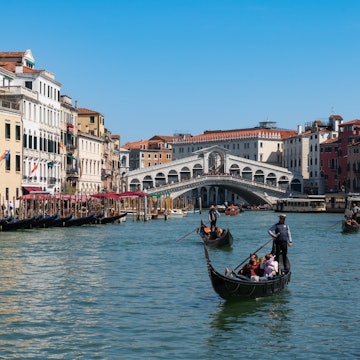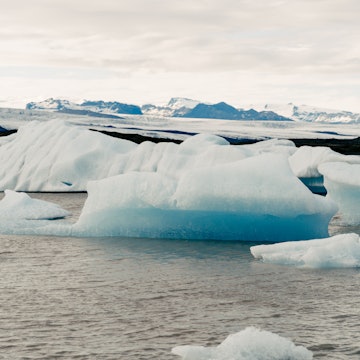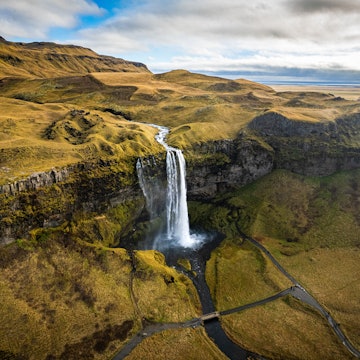
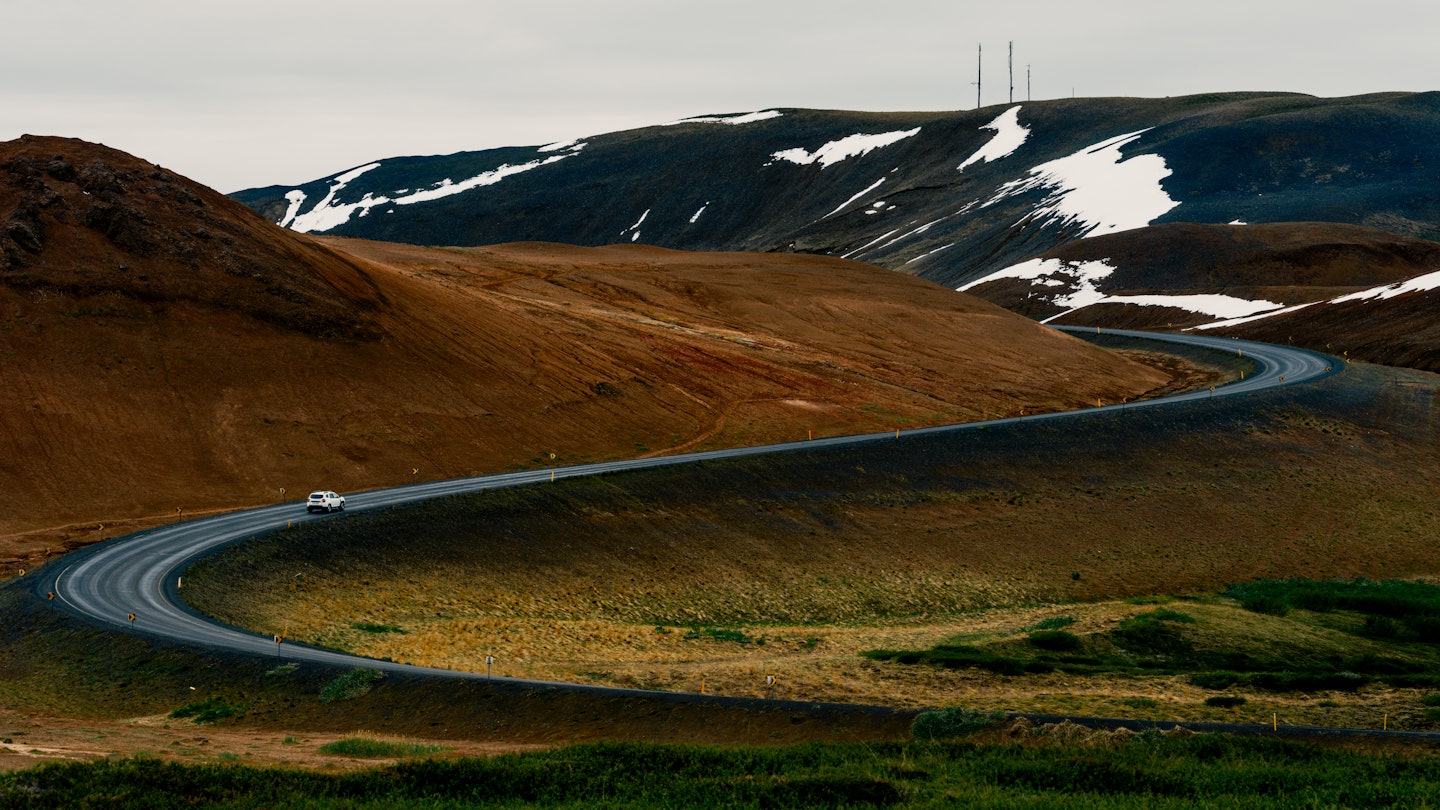
Road-tripping in Northern Iceland. Daniel Dorsa for Lonely Planet
Iceland’s Ring Road is one of the world’s most iconic drives. Tracing the contours of a remarkable landscape and taking you within reach of glaciers and volcanoes, the country’s Route 1 (1322km or 822 miles) is a two-lane road that unfurls like a magical Icelandic saga. Apart from the general wonder-at-large of the elemental terrain, you’ll have the chance to see canyons, waterfalls, hot-steam geysers and blue whales along the way.
I’ve been driving this road for as long as I can remember – in all seasons and in both directions. Every time I return, I find something new to discover. But even returning to old haunts is a reminder of a feeling very simple and old-fashioned: driving the Ring Road brings me great joy at the sheer beauty of this spellbound landscape.
Here’s the perfect itinerary to make the most of your trip around Iceland’s Ring Road in one week.

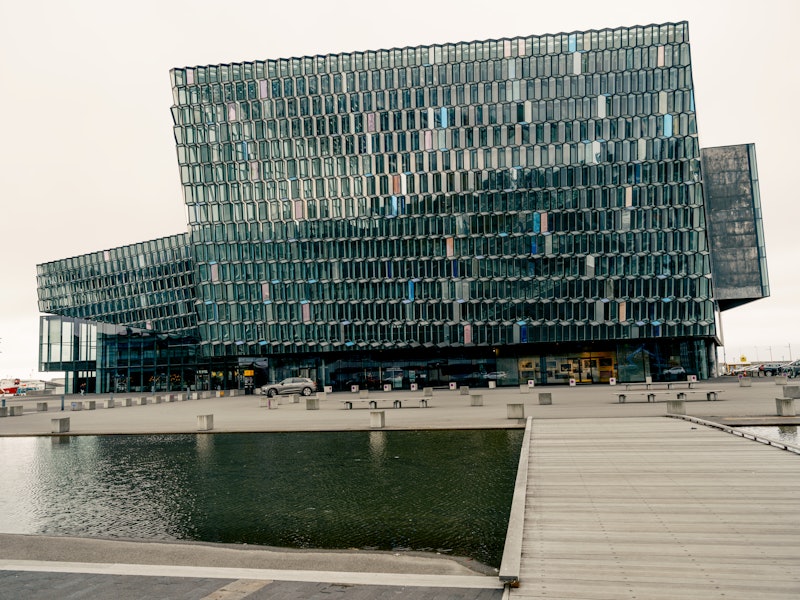
When to arrive
If you have a choice, try to arrive on an early morning flight into Reykjavik. That way you’ll make the most of your day – drop your bags at the hotel and get out and explore.
How to get from the airport
Reykjavik’s Keflavik Airport is 49km (30 miles) southwest of the city center, and you have three main options for getting into the city. The best is to arrange to pick up your rental vehicle on arrival, and drive.
The next best option is the Flybus, which takes 45 minutes and costs 5176kr (US$40) per adult and 2588kr (US$20) per accompanied child to the main bus station. From there, you can change to a bus for transfer to some hotels for an additional cost.
Private taxis from the airport to the center of town can cost 20,288kr (US$156).
Once there, Reykjavik has a compact town center that’s easy to get around on foot. Renting a bicycle is another terrific way to get around.
Where to rent a car
Most of the international car rental companies have desks in the airport's arrivals hall; local companies tend to be located in the city center. Advance bookings are essential, especially from June to September. While most travelers rent a standard 2WD vehicle, we recommend 4WD if you plan on driving in winter or on smaller roads through the highlands.
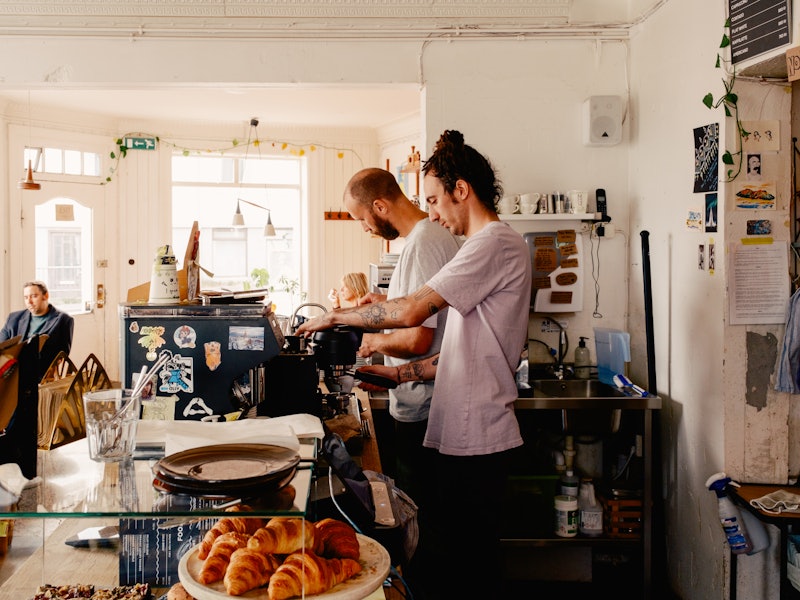
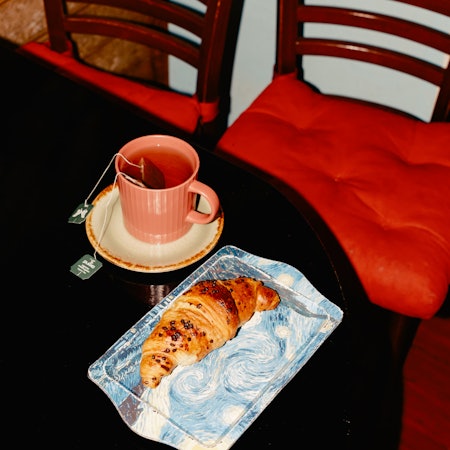
Where to stay in Reykjavik
Self-check-in apartments are a big deal in Iceland, including in the capital. Reykjavik City Hostel is an excellent value traveler hangout in one of the Europe’s most expensive cities. Forsæla Apartmenthouse has a range of sizes and styles available in the town center. And the boutique Alda Hotel combines intimacy with genuine luxury in a central position.
What to pack
Iceland’s weather is unpredictable. Even in summer, make sure to bring warm clothing, including a windproof outer layer (the windchill can be brutal) and a thermal underlayer. And since exploring is half the fun, bring hiking boots for trails and a bathing suit for Iceland’s famous geothermal pools.
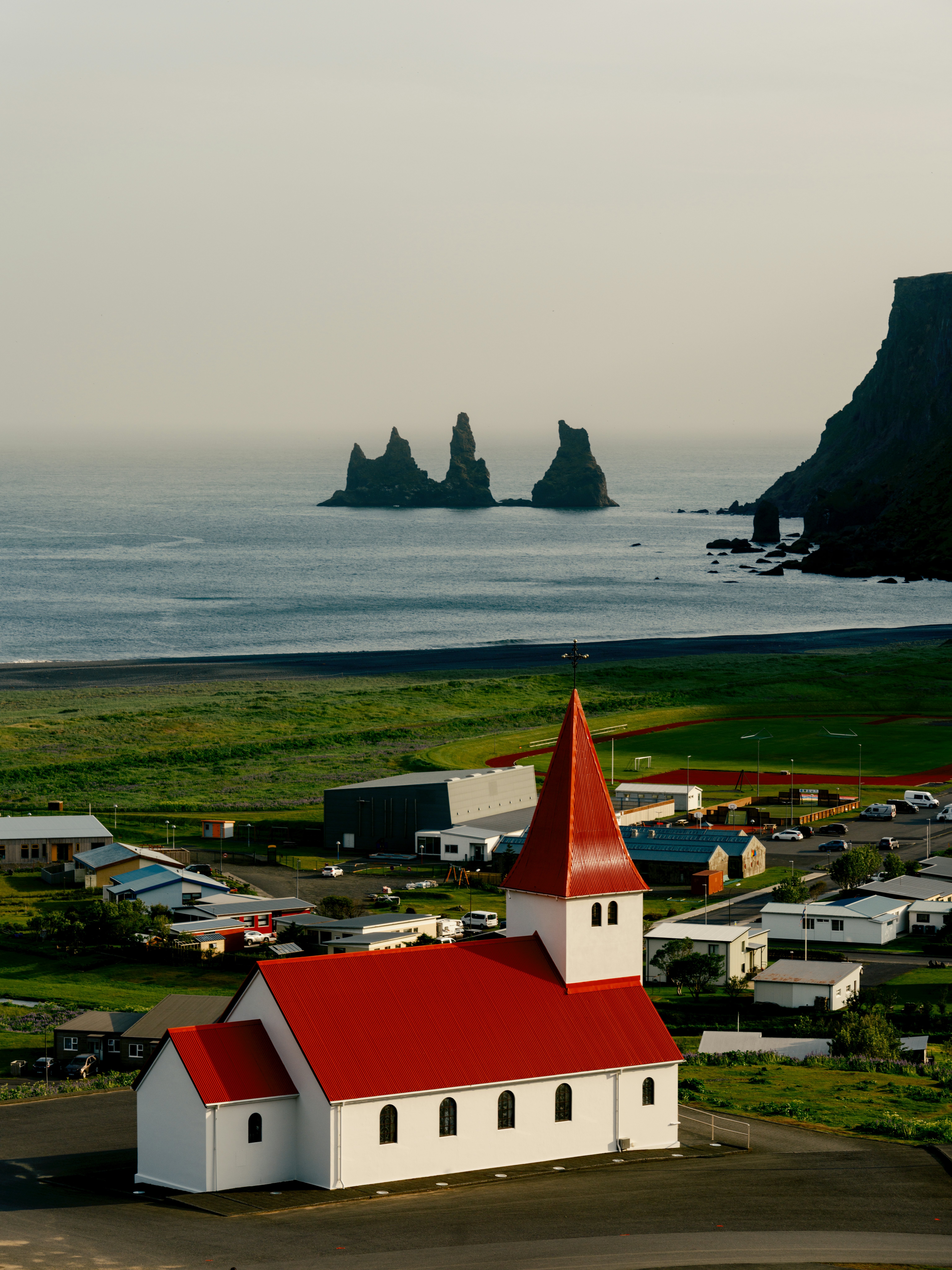
How long it takes
The full Ring Road covers 1328km (825 miles), and most travelers take a week to 10 days to do the full loop. On most days, there will be an enticing detour to tempt you off the main road, adding both time and distance to your trip. The Ring Road is entirely paved, although some side detours involve unpaved gravel roads. Even in autumn and spring, snowfalls and snowdrifts over the main road can occur without warning.
Traffic is rarely an issue, other than during peak hours on weekdays around Reykjavik; elsewhere, you'll rarely be slowed by other vehicles, except around major sights during the summer months.
Which direction to travel
You can drive the Ring Road in either direction; both are good choices. Most itineraries, including the one listed below, travel anti-clockwise because it gets you to more signature attractions early on.


Day 1 (Reykjavik)
Depending on how far you’ve flown to get here and what time you arrive, your first day in Iceland’s pretty little capital could vary greatly. Yes, it’s a cliché and can get overcrowded, but the Blue Lagoon on the Reykjanes Peninsula (between Reykjavik and the airport) is where you can soak and giggle and wonder in geothermal waters an astonishing shade of blue. Some people even visit here on their way to or from the airport.
Reykjavik deserves more than a hurried day, but with just seven days for the whole country, something has to go. Focus your attention on the charming town center, a world of design boutiques, art galleries, cool cafés and colorful houses, all rising to the iconic Hallgrímskirkja, Reykjavik’s utterly unmistakeable church.
If money is no object, consider taking a helicopter tour to see Iceland from above and get a taste of what awaits you out on the Ring Road.
The best afternoon meal in town has to be at Skál! for its unique take on Icelandic street food, followed by dinner at high-end Dill, arguably Iceland’s most creative kitchen.
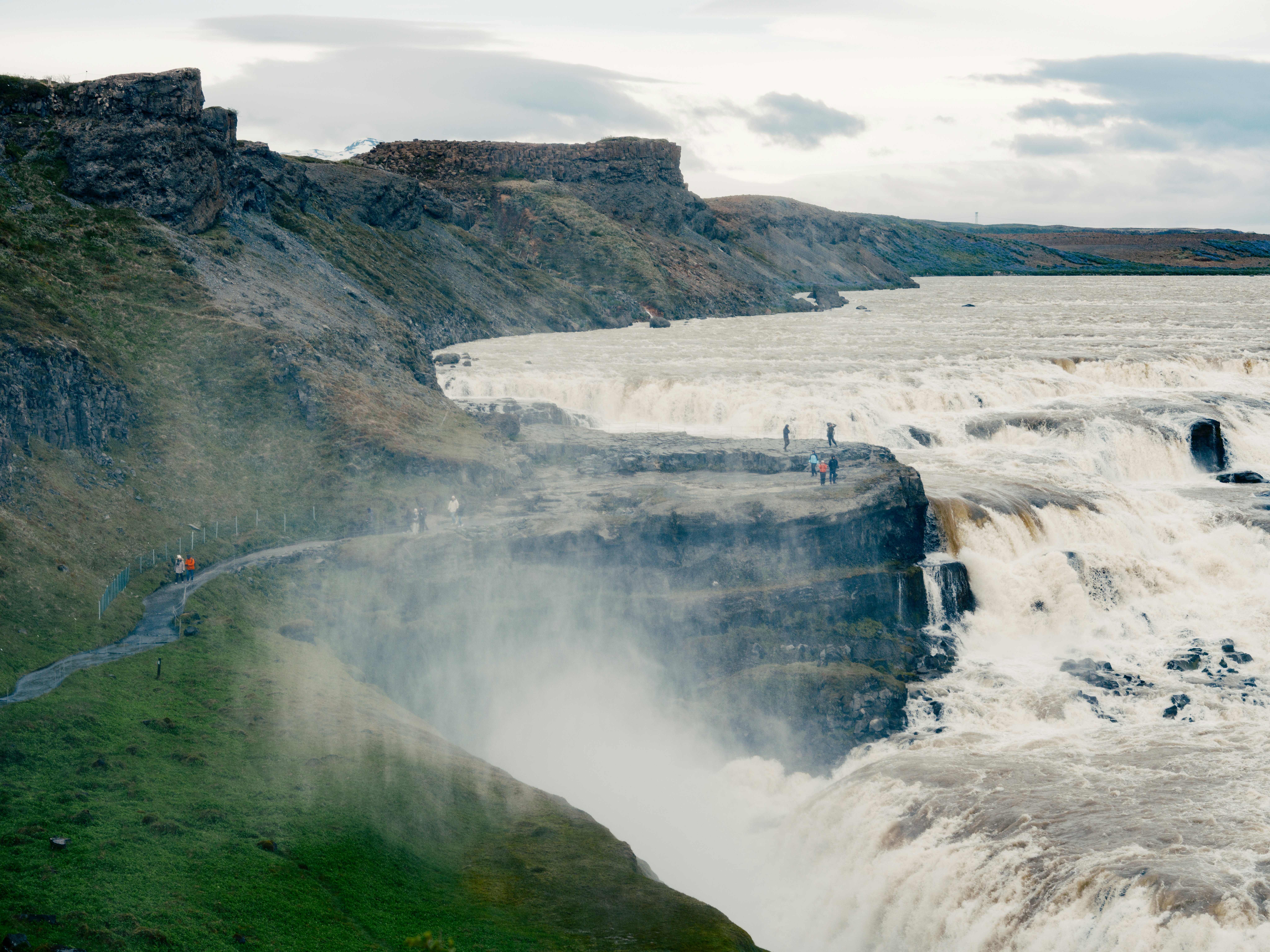
Day 2 (Reykjavik to Selfoss via the Golden Circle)
Grab something for breakfast at everybody’s favorite Reykjavik bakehouse, Sandholt Bakery before heading for the open road.
In an ideal world, you’d devote an entire day to Þingvellir National Park, but you can see the best of it in a morning. Hike some of the shorter trails and then snorkel between continents (or their tectonic plates) at Silfra Fissure. Signposts lead off on tempting detours, to Hrafnagjá Observation Deck, Flosagjá Canyon, Almannagjá or Lögberg – take as many of these as time allows. And Þingvallakirkja, a much-Instagrammed church, sits on the site where Iceland’s first parliament met for 800 years. Somewhere in the midst of all this, stop for lunch at cozy Lindin, known for its local food lik Arctic char, lamb and reindeer.
Chances are that you’ve spent longer than you planned taking it all in. But if there’s still any daylight left, make the most of it by squeezing in Haukadalur Valley (Iceland’s most prolific geysers – including Strokkur – mud pools and hot springs) and Gullfoss (a fabulous glacial waterfall that pours down through a canyon).
Before the final drive into Selfoss, stop for dinner at Hotel Gullfoss Restaurant, known for its Icelandic salmon or Icelandic lamb stew.

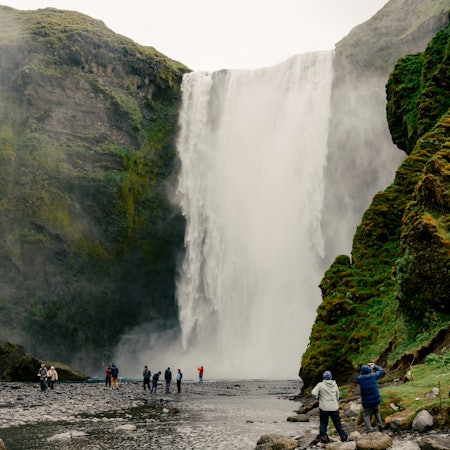
Day 3 (Selfoss to Vik)
As ever in Iceland, you’ll want to rise early as there’s so much to fit in. Begin your day with a trek through the red-hued lava tunnel of Raufarhólshellir, where nature’s power can still overwhelm even 5000 years after the lava last flowed. If the very idea of lava gives you frisson - and let’s face it, isn’t that everyone? – 50km (31 miles) southeast of Selfoss down Route 1 you'll find the state-of-the-art LAVA Centre at Hvolsvöllur cowering in the shadow of world-famous Eyjafjallajökull, the volcano that shut down Europe for a week in 2010.
In the afternoon, move from volcanoes to waterfalls. At 61m (200 feet) high, Seljalandsfoss is a Ring Road favorite because you can walk behind the cascade, though you'll get wet in the process. Here, Justin Bieber shot a music video and Shah Rukh Khan and Kajol gyrated in the name of Bollywood. To round out your day en route to Vik, stop by Skógafoss, another cascading beauty that never fails to impress. In Vik, eat Icelandic-Asian fusion for dinner at Suður-Vík.
As with anywhere when you find yourself under darkening Icelandic skies away from big cities, look up to the sky in case the aurora borealis puts on a show.
Reynisfjara Beach. Daniel Dorsa for Lonely Planet
Day 4 (Vik to Höfn)
Another full and fabulous day awaits, with three of the Ring Road’s signature attractions to take in. But before you do any of these, climb to the hilltop Víkurkirkja above Vik for spectacular sunrise views. Follow that with either a walk to Reynisfjall for more superlative views (and possible puffin sightings), or a morning ride on an Icelandic horse on the black-sand Víkurfjara beach with Vik Horse Adventure.
Around 20km (20 miles) beyond Vik, follow the signs to Dyrhólaey, an island-turned peninsula with a gorgeous natural rock arch visible from the cliffs.
But your day is only just getting started, and Skaftafell is utterly magnificent: walk from the visitor center through the forest to Svartifoss, the achingly superb Black Waterfall with waters plummeting past deeply striated rocks, and then to the Skaftafell glacier tongue. The road connecting these sights is among the most beautiful in Iceland, and the road to Jökulsárlón is no exception. (We doubt you’ll have time en route but looking for puffins at other-worldly Ingólfshöfði is a fine detour if you do.) When you get there, Jökulsárlón is a wonderland of floating icebergs heading out to sea, with some coming ashore at adjacent Fellsfjara (aka Diamond Beach).
Overnight and dinner in Höfn; Pakkhús does excellent local specialties: order a sheep-dung-smoked local whisky while you contemplate the menu.
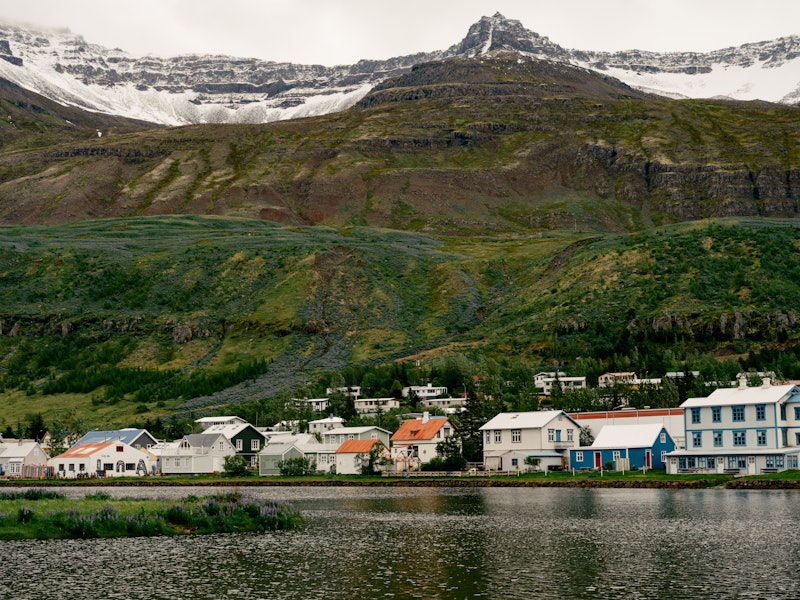

Day 5 (Höfn to Egilssatðir)
Don’t mess around with breakfast: stop by Hafnarbúðin to pick up a lobster baguette to go to enjoy during your travels.
Today is less about specific sights than the freedom and awesome natural beauty of the open road. The route hugs the narrow ribbon of land between steep mountains and wild seas, bucking and weaving past rocky headlands, crossing ancient lava flows that once reached the sea, and admiring black-as-black rocky cliffs tinged with improbable green. Along the way, isolated farmhouses and villages huddle around sheltering harbours, lonely outposts in a region where nature very much holds sway. It’s the sort of route where you’ll find yourself pulling over often for photos, to gaze in wonder, or simply enjoy your lobster baguette with a view to match.

Egilsstaðir may be the official goal, lying as it does at an important crossroads on Route 1. But I always take the short drive up and over the mountains and down to Seyðisfjörður. Surely one of Iceland’s loveliest villages, it has colorfully painted houses, a pleasing little church, and a pervasive feeling of having ended up somewhere very special at the end of a quiet and beautiful road.
Day 6 (Egilssatðir to Akureyri)
Begin the day with an early morning walk around the harbor at Seyðisfjörður, followed by the special mountain drive back up and over to Egilsstaðir; on the descent into town, there’s a parking area where, weather permitting, the whole valley is visible in all its glory. As with yesterday, it’s the drive that really grabs the attention, at least in the morning. For 175km (108 miles) from Egilsstaðir to Lake Myvatn, settlements are few but the views are unrelenting, a classic panoramic unfurling of Iceland’s high plateaux, amid mountains and lakes that sometimes remain icebound until well into summer.

Two detours call you away from Route 1 on your way to Akureyri. The first is to the Jökulsárgljúfur Canyon, home to superb Dettifoss – a waterfall that easily belongs in Iceland’s best attractions – and a canyon stretching 25km (16 miles) unlike any other in the country.
The second detour is to Húsavík. Worth a visit for its setting alone, Húsavík is also Iceland’s whale-watching capital – sightings are common in summertime, with even the occasional blue whale venturing within range. Just the mere possibility of seeing the largest living creature on earth is enough to draw me here over and again.
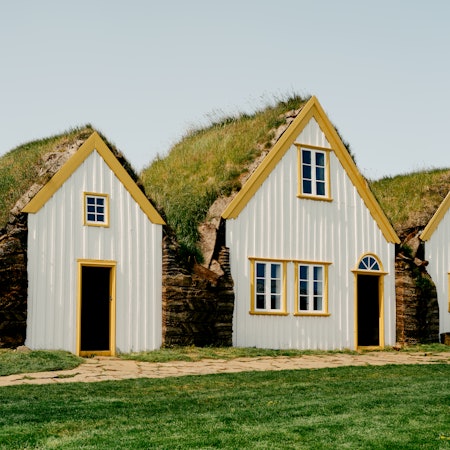

Day 7 (Akureyri to Reykjavik)
After a hearty breakfast at Blaá Kannan, you’ve a longish, nearly 400km (248 miles) road back to Reykjavik. What you can see along the way will depend on when your flight leaves the capital. If time permits, spend some time exploring Skagafjörður, a little-visited peninsula home to turf-roofed houses and opportunities to ride tough and yet strangely beautiful Icelandic horses: Lýtingsstaðir and Syðra-Skörðugil both offer rides. At Blönduós, you’ll catch a last glimpse of the wildly beautiful northern Icelandic coastline before the route heads southwest and inland on your way back to the capital.
This being Iceland, it’s a relentlessly picturesque drive. Along the way, you’ll pass tempting roads that fan out into the Westfjords or the Snæfellsnes Peninsula – journeys in themselves, and reason enough to start planning your next trip.













